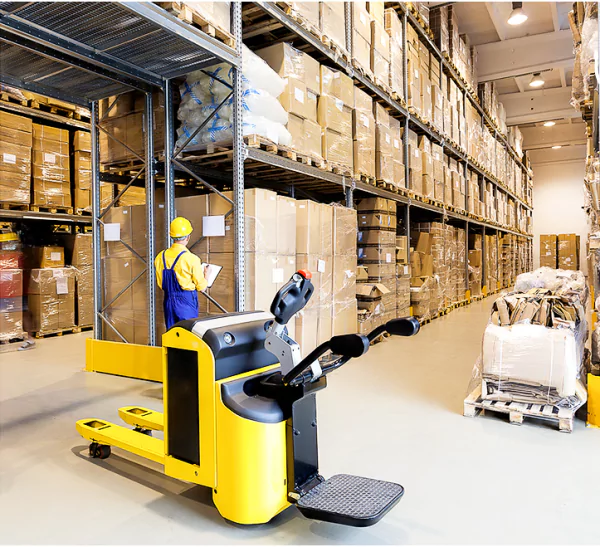Warehouse and Consolidation
Defining Warehouse
Warehouses play a role, in the supply chain by storing goods before they reach consumers to ensure a flow of products from manufacturers to end users.Goods are stored for durations to meet demand changes and minimize delays in accessing products.Warehouses also serve as hubs where items, from suppliers are consolidated before shipping to enhance efficiency.
Types of Warehouses
Different kinds of warehouses are available to meet requirements, within the supply chain system.Public warehouses provide storage services for rent. Are suitable for medium sized businesses.Private warehouses are. Managed by companies, for their specific needs.Distribution centers are facilities that concentrate on the transport and distribution of goods. Cold storage facilities are utilized for keeping goods that need temperature regulation in check; automated warehouses leverage cutting edge technology to streamline storage and retrieval operations.
Defining Consolidation
Pooling resources involves merging deliveries, from providers to form container loads in logistics operations.This method enhances efficiency by cutting down on transport and handling expenses.Combine shipments into one larger shipment can lead to considerable cost reductions and operational enhancements.Consolidation is especially beneficial, in logistics as it aids in simplifying shipping procedures.
Key Strategies for Effective Warehouse Management
Modern Inventory Management Techniques
Efficient warehouse operations rely heavily on methods, for managing inventory in todays world. Systems that track stock levels and movements in real time offer data about the whereabouts and quantities of goods stored in the warehouse. This real time information facilitates improved predictions. Helps reduce instances of running out of stock or having stock. Moreover incorporating automation and artificial intelligence into the mix can boost the efficiency of managing inventory by simplifying duties and offering insights based on data, for making informed decisions.
Real-Time Tracking Systems
Tracking systems, in real time utilize technologies like RFID. Gps to monitor the movement and condition of goods inside the warehouse. This allows managers to get an overview of stock levels and positions making stock management more efficient and reducing mistakes. Furthermore real time tracking promotes transparency and responsibility by recording each goods movement, for auditing purposes.
Automation and AI Integration
The use of automation and AI, in warehouses has the potential to transform operations by boosting efficiency and minimizing mistakes made by humans.Automated systems can manage duties like organizing items for shipping and labeling them accurately.AI algorithms play a role, in analyzing data to enhance inventory management and forecast demand patterns.These advanced technologies not enhance effectiveness but also allow workers to focus on tasks that require human expertise.
Efficient Space Utilization
Ensuring use of space is essential, for making the most out of a warehouses capacity Increase storage space by utilizing storage options that make use of all available space including height Organizing goods in the warehouse logically and, in a way that allows easy access can also boost efficiency
Safety and Compliance Protocols
Ensuring safety and following compliance guidelines is crucial, for the functioning of a warehouse facility. It is important to comply with regulations to ensure that the warehouse operates in accordance with the law. Implementing measures to safeguard employee well being such as providing training and ensuring the use of personal protective gear (PPE) is also critical, in order to reduce workplace incidents.
Regulatory Standards
Following guidelines is essential to ensure the warehouse functions in adherence, to the laws requirements such, as maintaining health and safety standards and complying with industry specific regulations.Through audits and inspections areas needing enhancement can be pinpointed leading to compliance.
Employee Safety Measures
Ensuring employee safety entails conducting safety training sessions to promote practices and keeping work areas clean and well organized while ensuring that suitable personal protective equipment (PPE) is readily accessible, to all staff members.These measures help decrease the likelihood of accidents and cultivate a work environment, for everyone involved.
Holyale
Holyale fits the above description. Holyale Group, a world-class sourcing company established in 2002, offers a comprehensive one-stop service to global customers. Holyale’s business and services are extensive, including business team customization, Amazon FBA procurement, inspection & quality control and so on.
One of Holyales strengths lies, in its warehouse and consolidation services department. Holyale possesses positioned warehouses in Yiwu, Guangzhou and Shantou that collectively span over 3000 square meters. These warehouses have the capacity to hold up to 100 * 40HQ containers at a time enabling Holyale to consolidate products from suppliers, across China.
When you reach the warehouse site. Check the products, for quality control before consolidating them into a container to cut down costs efficiently at Holyales warehouse facility.”They offer round the clock service and complimentary storage for all clients including those with cargo ” creating a sense of ownership, over your stored items while optimizing both time and cost savings for you.
Centralizing your warehouse activities in a Holyale facility offers the benefits of saving time and enhancing efficiency while also minimizing mistakes and lowering expenses.Crucially it enhances customer satisfaction, with your company resulting in a ROI and fostering long term growth opportunities.
Holyale has been a trusted partner, for businesses seeking guidance in warehouse management and consolidation services for over 19 years, in the global market landscape.
Best Practices for Successful Consolidation
Collaborative Planning with Partners
Working together with supply chain partners is essential for a successful consolidation process to take place smoothly and effectively as good communication and integration, with partners ensure that shipments are coordinated and consolidated efficiently with the help of meetings and shared platforms, for sharing information.
Integrating Supply Chain Partners
Involving supply chain collaborators includes utilizing platforms and tools that facilitate sharing of information, among stakeholders in real time, for enhanced coordination and streamlined shipment consolidation.
Implementing Technology Solutions
Utilizing technology solutions can greatly improve the efficiency and success of consolidation endeavors Enhanced software systems and analytical tools offer information to guide decision making These tools allow for more precise predictions and enhanced inventory control They also aid in better coordination of deliveries.
Data Analytics for Decision Making
Data analysis software examines volumes of data to offer insights that guide decision making procedures. Such tools can pinpoint patterns predict demand and fine tune stock levels resulting in enhanced consolidation and operational efficiency.
Achieving Cost Savings Through Consolidation
Achieving savings through consolidation includes cutting transportation expenses and minimizing storage charges.By combining shipments businesses can maximize container usage reducing the need, for trips and decreasing transportation costs.In addition sound consolidation tactics can decrease storage fees by streamlining the movement of goods along the supply chain.
Reducing Transportation Costs
Consolidation offers an advantage in cutting down transportation expenses by merging shipments into bigger ones to maximize container space and decrease the frequency of trips needed for delivery purposes—resulting in reduced transportation costs and a lighter environmental footprint, from shipping activities.
Minimizing Storage Fees
Reduced storage costs require ensuring that items move efficiently through the warehouse without staying in storage for periods of time Effective consolidation methods can assist in this goal by optimizing the movement of goods and cutting down on the need, for extended storage to reduce fees related to it.
Challenges in Warehouse and Consolidation Management
Flexibility and Adaptability
In dealing with disruptions, in the supply chain networks management process being flexible and adaptable is crucial for companies to navigate through challenges successfully and maintain continuity by swiftly adjusting to shifting situations such, as sourcing from alternate suppliers adjusting inventory levels or reroute shipments as needed.
Contingency Planning
Preparing for disruptions, through contingency planning involves creating strategies to handle unforeseen events like identifying backup suppliers and maintaining emergency inventory while also developing procedures for promptly addressing any interruptions in operations.This proactive approach minimizes the effects of disruptions. Facilitates a swift recovery, to regular business activities.
Managing Human Resources
Managing resources is also an element, in running an efficient warehouse and consolidation operation as having a skilled and motivated workforce is essential, for ensuring optimal operational performance.Human resource management includes the implementation of training initiatives and the creation of strategies to retain labor force.
Training Programs
Employees must undergo training programs to acquire the skills and knowledge required for task performance holding training sessions ensures that employees are, up to date with current industry standards and technologies a well trained workforce plays a crucial role, in enhancing warehouse and consolidation operations by minimizing errors and boosting productivity.
Future Trends in Warehouse and Consolidation
Emerging Technologies in Logistics
The logistics sector is experiencing a shift due, to the emergence of technologies, which could greatly improve the efficiency and performance of warehouse and consolidation activities.
Automation and Robotics
There is a growing presence of automation and robotics, in warehouse operations nowadays. Robotic arms and automated guided vehicles (AGVs) for example are capable of performing tasks like picking items packing goods and sorting them out which helps lessen the need for labor. These advancements not enhance productivity. Also decrease the chances of human mistakes ultimately enhancing the precision of processes, in general.
Internet of Things (IoT)
The Internet of Things (IoTs ) is changing the game in logistics by allowing for tracking and monitoring of goods, in time offering insights into the status and whereabouts of items along the supply chain journey. This instant accessibility, to information empowers choices. Streamlines the management of warehouse and consolidation operations.
Sustainable Practices in Warehousing
The warehousing industry is increasingly prioritizing sustainability as a core aspect of its operations aiming to adopt practices that benefit the environment while also driving cost savings and enhancing efficiency.
Energy-Efficient Warehouses
Warehouses that focus on saving energy are created to use energy by incorporating technologies and eco friendly materials, like efficient lighting systems and renewable energy sources such, as solar panels to regulate climate conditions efficiently while decreasing carbon emissions and cutting costs substantially.
Waste Reduction Initiatives
Efforts to cut down on waste in warehouses aim to reduce the volume of trash generated through activities by introducing recycling schemes and utilizing eco packaging materials while streamlining procedures to limit unnecessary waste production.This approach not supports sustainability efforts. Also improves the overall effectiveness of warehouse operations, by trimming down expenses linked to waste management.
In summary efficient management of warehouses. Consolidation involves tackling issues linked to supply chain disruptions and workforce while embracing technologies and sustainable approaches. Companies that adopt these methods can streamline their logistics processes, cut expenses and improve customer happiness.







